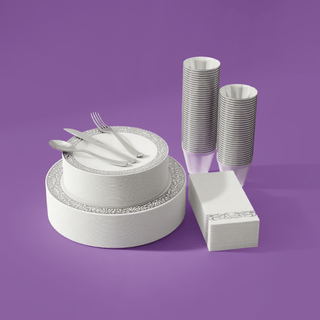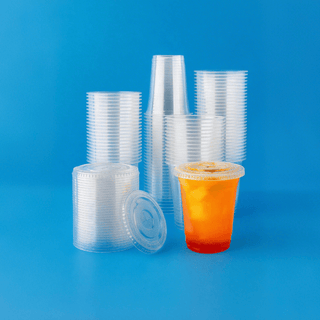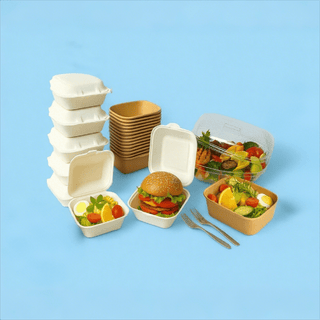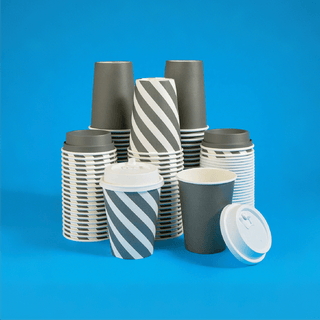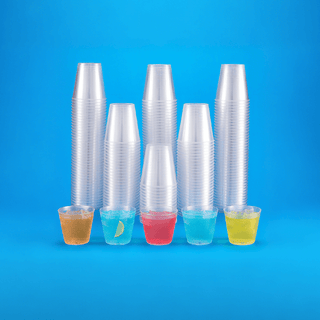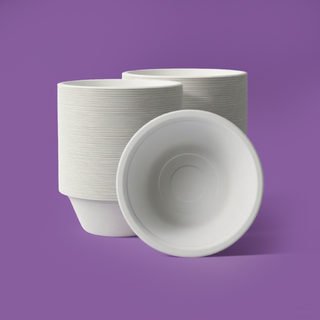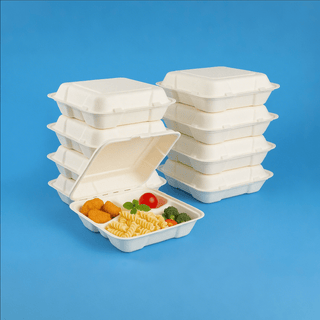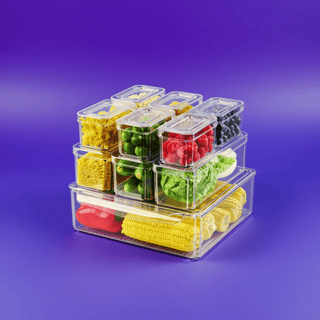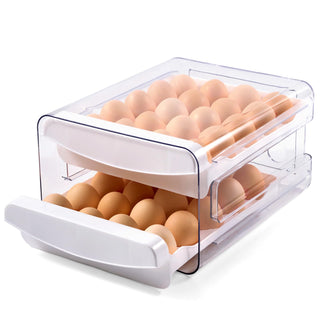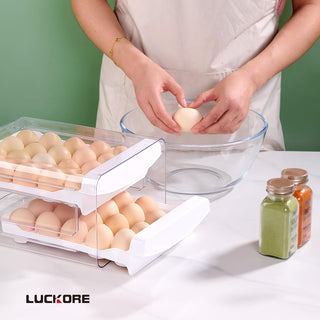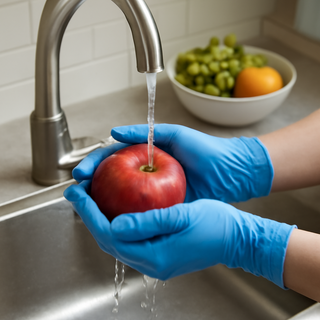
Food Handling Glove Protocol
You can make a major impact on food safety in your kitchen. Using disposable gloves correctly is a critical control point for preventing illness. An effective protocol involves a three-part system: rigorous handwashing, selecting the right gloves, and knowing when to change them. Improperly used gloves, like disposable nitrile gloves, can be as risky as bare hands.
Studies show the danger of cross-contamination:
Bare-hand contact contributed to nearly 28% of foodborne illness outbreaks.
Glove-hand contact was a factor in over 15% of outbreaks.
Always remember that gloves supplement clean hands; they never replace them.
Key Takeaways
-
Always wash your hands well with soap and water before putting on gloves. Clean hands are the most important step for food safety.
-
Choose the right food-safe gloves for each task. Nitrile gloves are best for most kitchen jobs, but vinyl and poly gloves work for lighter tasks.
-
Change your gloves often to stop germs from spreading. Always change them after touching raw meat, before handling ready-to-eat food, or if they get dirty.
-
Never reuse disposable gloves. Take them off carefully and throw them away. Always wash your hands again after you take off your gloves.
Hand Hygiene: The Foundation
You must build your glove protocol on a solid foundation of excellent personal hygiene. Clean hands are the starting point. Putting gloves on dirty hands only traps contaminants, creating a dangerous situation. Think of handwashing as the single most important step you take to prevent foodborne illness.
Why Handwashing is Non-Negotiable
You might wonder if hand sanitizer is a good shortcut. The answer is no. In a food service environment, washing with soap and water is the only approved method.
-
The FDA Food Code requires proper handwashing because it is proven to reduce the spread of microorganisms. Sanitizer alone is not a substitute.
-
Soap and running water physically dislodge and wash away germs, soil, and food debris from your skin.
-
Studies show that food debris makes hand sanitizers less effective at killing germs.
Tip: Always choose a designated handwashing sink. Never wash your hands in a sink used for food preparation or dishwashing.
The Proper Handwashing Technique
A quick rinse will not work. You need to follow the correct steps every single time to effectively remove pathogens.
-
Wet your hands with clean, running water.
-
Lather up with soap. Be sure to scrub the backs of your hands, between your fingers, and under your nails.
-
Scrub your hands for at least 20 seconds. A great tip is to hum the "Happy Birthday" song from beginning to end twice.
-
Rinse your hands well under clean, running water.
-
Dry your hands completely using a clean, single-use towel.
Drying Hands Effectively
Drying your hands is just as important as washing them. When you put gloves on damp hands, the moisture and your body heat create a warm, humid environment. This cozy space is an ideal breeding ground for bacteria to multiply quickly.
To avoid this risk, you must dry your hands thoroughly. For a guaranteed sanitary and effective solution, use Jolly Chef's Linen-Feel Disposable Hand Towels. These premium, single-use towels are highly absorbent, ensuring your hands are perfectly dry before gloving. Their luxurious feel adds a touch of quality to your kitchen's handwashing station and is elegant enough for guest restrooms. Using a fresh towel every time eliminates cross-contamination and provides unmatched convenience.
Choosing Your Disposable Gloves
After washing your hands, you need to select the right protection. Not all disposable gloves are created equal. Using the correct type for each task is essential for safety and efficiency in your kitchen.
Understanding Food-Safe Ratings
You must use gloves specifically rated as 'food-safe'. This is not just a marketing term. The FDA has a regulation, Title 21 CFR Part 177, that sets the standard. It ensures the materials used to make the gloves are safe for direct contact with food. A glove that meets this standard will not transfer harmful substances to the food you are preparing.
Jolly Chef Nitrile Gloves
For most kitchen duties, nitrile gloves are your best choice. Jolly Chef Blue Nitrile Gloves are an excellent example of a reliable, food-safe option. They are latex-free and powder-free, offering superior protection.
Did You Know? Nitrile is about three times more puncture-resistant than latex. This makes it ideal for handling sharp tools or bone-in meats without tearing.
Vinyl Gloves for Lighter Tasks
Vinyl gloves have a place in the kitchen for specific, low-risk jobs. You can use them for tasks that involve:
-
Handling non-greasy foods like fruits and salads.
-
Short-duration prep work.
-
Situations where you need to change gloves very frequently.
Poly Gloves for Quick Tasks
Polyethylene (poly) gloves are the thinnest and most affordable option. Their use is very limited. These disposable gloves are best for extremely quick, simple tasks like grabbing a pastry or assembling a sandwich for immediate service. They tear easily, so you should not use them for any complex prep work.
The Importance of a Proper Fit
Your disposable gloves must fit correctly. If they are too tight, they can easily rip and expose your hands. If they are too loose, they can snag on equipment and make it hard to grip tools safely. A poor fit in either direction increases the risk of tearing and cross-contamination.
Latex-Free for Allergy Safety
Latex allergies are a serious concern. About 4.3% of the general population has a latex allergy, and food handlers are a high-risk group. To protect both your staff and your customers, you should always choose latex-free options. In fact, eight states have already banned latex gloves in food service. Using nitrile gloves eliminates this risk entirely.
Critical Glove Changing Rules
Knowing when to change your gloves is just as important as wearing them. You cannot treat gloves like a second skin. You must change them frequently to prevent cross-contamination. Following these non-negotiable rules is essential for keeping food safe.
After Handling Raw Proteins
You must always change your gloves after touching raw meat, poultry, or seafood. Raw animal products are a major source of dangerous pathogens.
Raw poultry, for example, often contains harmful bacteria. Salmonella and Campylobacter are two of the most common pathogens found on raw chicken. These germs are leading causes of foodborne illness in the United States. You should also know that these pathogens can be on the outside of the packaging. Studies found germs like E. coli and Campylobacter on the surface of raw poultry packages. Simply touching the package with your gloved hands can lead to contamination.
Critical Control Point: After you finish preparing raw chicken, you must remove your gloves, wash your hands properly, and put on a new pair before you touch anything else. This single action stops the spread of dangerous bacteria.
Switching to Ready-to-Eat Foods
You must change your gloves before you handle any Ready-to-Eat (RTE) foods. The FDA defines RTE food as any food that is safe to eat without any more cooking. These foods will not be heated to kill germs before a customer eats them.
Examples of RTE foods include:
-
Salads and washed vegetables
-
Fresh fruits
-
Sandwiches and deli meats
-
Baked goods like donuts and bread
Because these foods get no final cooking step, they are very vulnerable to contamination. Studies of delis have found that improper glove use is a major reason for cross-contamination. Pathogens can easily transfer from a contaminated glove to lettuce, cheese, or bread. The warm, moist space inside a glove can also help bacteria grow. If your glove has a tiny leak, it can release a huge number of germs onto the food. Protecting RTE foods is a top priority.
When Gloves are Damaged or Soiled
You must change your gloves immediately if they become torn, punctured, or dirty. A damaged glove offers zero protection. In fact, it can be more dangerous than no glove at all.
You might not even see the damage. Electron microscopes show that tiny pinholes and tears, invisible to your eye, are common in disposable gloves. These microscopic failures create a direct path for germs to travel from your hand to the food.
⚠️ Did You Know? Research shows that up to 18,000 bacteria can pass through a single, tiny glove hole in just 20 minutes. This happens even if you washed your hands before putting the gloves on.
Always inspect your gloves. If you see any dirt, food residue, or damage, change them right away.
After Any Non-Food Task
Your gloves are for handling food only. If you interrupt a food task to do something else, you must remove your gloves and wash your hands.
Common non-food tasks that require a glove change include:
-
Touching your face, hair, or clothing
-
Taking out the trash
-
Answering the phone or using a tablet
-
Handling money or touching the cash register
-
Opening a door or refrigerator handle
Surfaces like phones, door handles, and counters are covered in microbes. You can find E. coli, staphylococci, and viruses like norovirus on these high-touch surfaces. When you touch one, your gloves become contaminated. You must discard them and wash your hands before returning to food prep.
The Four-Hour Continuous Use Rule
You should never wear the same pair of gloves for more than four hours, even if you are doing the same task. The FDA Food Code sets this as a maximum time limit. After four hours of continuous use, you must change your gloves.
There are two main reasons for this rule:
-
Bacterial Growth: The warm, moist environment inside your gloves is a perfect breeding ground for bacteria. Over time, the number of germs on your hands can multiply to very high levels.
-
Glove Integrity: The longer you wear a pair of gloves, the more likely they are to develop microscopic tears. Prolonged use and stress on the material increase the risk of failure.
For safety, it is best to change your gloves much more frequently. Think of four hours as the absolute maximum, not the standard goal.
Safe Glove Removal and Disposal
How you take off your gloves is as important as any other step in this protocol. Improper removal can spread germs from the glove directly onto your hands and wrists. You must follow a specific procedure to protect yourself and the food you prepare.
The Glove-to-Glove Technique
You should always use the "glove-to-glove, skin-to-skin" method. This technique ensures your bare skin never touches the contaminated outside of a glove. Touching the outer surface with your bare hands can easily transfer harmful bacteria to your skin. Major health organizations, like the World Health Organization (WHO), demonstrate this exact method as the standard for safety.
Step-by-Step Removal Guide
Follow these steps carefully every time you remove your gloves. This process contains the contaminants and keeps your hands clean.
-
Grasp the Outside: With one gloved hand, pinch the other glove at the wrist area.
-
Peel It Off: Pull the glove downward and away from your body, turning it inside out as you go.
-
Hold the Glove: Hold the removed, inside-out glove in your still-gloved hand.
-
Slide Under: With your now-bare hand, slide two fingers under the cuff of the remaining glove. Be careful not to touch the outside.
-
Peel and Contain: Peel the second glove off, turning it inside out over the first glove. You now have a small bundle with the contaminants trapped inside.
Proper Disposal of Disposable Gloves
You must dispose of used gloves immediately in a designated trash receptacle. Single-use disposable gloves are often made from petroleum-based materials like nitrile. When not disposed of correctly, they contribute to plastic pollution in landfills and oceans. Placing them directly in the trash is a simple but crucial action.
Post-Removal Handwashing
Washing your hands after removing gloves is a non-negotiable final step. Why? Studies show that your hands can become contaminated during the removal process, even when you follow the correct procedure.
⚠️ Safety Alert: Research has found that bacteria and viruses can transfer to hands through tiny, unseen glove defects or during the act of removal. A final, thorough handwashing is your last line of defense.
Your food safety success depends on a simple, three-step protocol: Wash, Select, and Change. You must follow these rules consistently to protect public health. Your commitment turns these steps from a list into a powerful safety system.
Managers, Take Action! 🗣️ Use this guide for regular staff training. Food safety training is one of the most effective ways to prevent foodborne illness. It is proven to improve practices like handwashing and increase overall food safety knowledge in your team. Foster a culture of safety in your kitchen today.
FAQ
Can I wash and reuse my disposable gloves?
No, you must never wash or reuse disposable gloves. They are designed for single use only. Washing can create tiny, invisible holes that allow germs to pass through to the food. You should always throw them away after one use and get a fresh pair.
Is hand sanitizer okay before putting on gloves?
You should not use hand sanitizer as a substitute for handwashing in a kitchen. The FDA Food Code requires you to wash your hands with soap and water. Food debris on your hands can make sanitizers less effective. Always follow the proper handwashing steps before gloving.
Why can't I use any cheap glove for handling food?
You must use gloves specifically rated as 'food-safe'. This rating ensures the material will not transfer harmful chemicals to the food. Options like Jolly Chef Nitrile Gloves are tested for safety. Non-rated gloves can contaminate the food you are preparing, creating a risk for customers.
Do I really need to wash my hands after taking gloves off?
Yes, this step is critical. 🧼 Your hands can get contaminated from tiny, unseen holes in the gloves or during the removal process itself.
A final handwashing is your last line of defense. It ensures your hands are completely clean before you start your next task or touch another surface.

